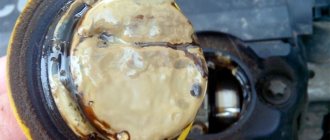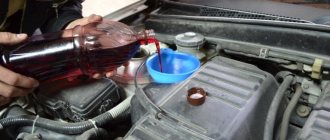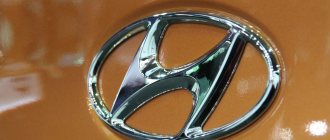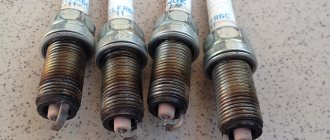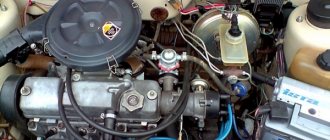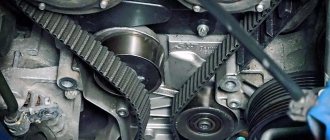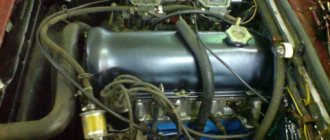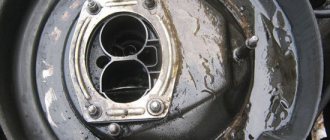Shortchanging, weighing, counterfeiting goods - all these are types of deception of the buyer. These include filling with low-quality fuel.
Large chains rarely sell bad gasoline. But smaller gas stations are capable of diluting fuel with water or other substances (additives, counterfeit compounds, etc.). Let's look at how to recognize from your car that you have filled it with low-quality gasoline, and what consequences filling it with bad fuel can cause. And what should you do if you are deceived by such a buyer?
General information
Low-quality gasoline can be offered at many gas stations in the country. This low octane fuel is brought to high octane fuel through an artificial route. Additives that can be used are MMA and MTBE.
This approach to diluting gasoline is quite dangerous. Calculating the octane number of the resulting product is practically impossible. Most cars react characteristically to the increased ability of fuel to detonate.
Bad fuel can be perceived differently by cars. Some will run without noticeable problems, while others may simply break down. Therefore, you should be very careful when choosing a gas station and gasoline.
What is low-quality fuel
Let's look at what good gasoline is. This fuel is characterized by a specific additive content. It has its own level of quality and a certain purity. Let's consider the basic concepts that will help determine quality fuel:
- Octane number. In other words, this is the resistance of the fuel to self-ignition, which occurs during the compression process. For artificially created compounds it is quite low. This threatens a destructive detonation.
- Water. It is quite often mixed into fuel. Of course, it’s better to sell 25 liters rather than 24 (if without water). In modern cars, the fuel filter mesh prevents moisture from penetrating the combustion chamber. In winter this is fraught with consequences. Water freezes, it can seal the filter. The water will need to be removed from the tank.
- Sulfur. There should be a minimum of this substance in gasoline. The lower the indicator, the higher the quality of the fuel. Almost no one checks counterfeit liquids for sulfur levels. The combustion of this component inside the engine cylinders causes the formation of sulfur oxide. If you add steam from water to it, you get sulfuric acid. Even in a minimal amount (in which it is located inside the engine), it has a bad effect on all its elements with which it comes into contact.
- Aromatic hydrocarbons. These substances are added to increase the octane number. This component increases the formation of carbon deposits inside the engine. Hydrocarbons have been recognized to have a negative effect on plastic due to their solvent effect.
- Benzene. High levels of this substance increase the toxicity of gasoline combustion products. This substance forms increased carbon deposits inside the engine.
- Alcohols, ethers. This additive is also necessary for “badyazhniki” to increase the octane number. In an amount of 3 - 5% they do not cause harm to the engine. If the figure reaches 10%, consumption will increase. In hot weather, there is a possibility of an air lock forming inside the fuel supply system.
Its signs
How can you tell if the gasoline you poured is of poor quality? Listen to your car. Poor quality fuel will manifest itself as:
- Poor engine starting. This is caused by weak ignition of diluted fuel. There is a danger for the car in the form of a breakdown of the ignition system.
- Wear of spark plugs. They wear out due to poor engine starting. The part is covered with carbon deposits (reddish in color). This is a clear sign of high iron levels in the fuel.
- Clogged fuel pump and filter. These faults can cause the car to not start. Diagnostics of the pump and filter is required.
- Detonation inside the engine. In car operation, this manifests itself in unnecessary knocking noises that occur during engine operation. The reason may be low quality fuel. A similar effect can also occur if there is a problem with the ignition system.
- Black exhaust. A clear sign of bad fuel. Black smoke indicates incomplete combustion of gasoline and the formation of soot.
- Reduced engine thrust. The car owner may note that his car has become “sluggish.” If there are no extraneous noises or movement defects, it is worth trying next time to fill the tank with higher quality gasoline with a high octane number. When the former strength returns, we can say that the previous gasoline you filled in was of poor quality.
- High fuel consumption. This often happens when using questionable gasoline.
- Intermittent car movement. This may occur during overclocking. Such jerks that appear when the gas pedal is depressed indicate fuel contamination with chemicals and water.
- Defects of the ecological system. Initially, the sensor indicating the level of oxygen in the exhaust gases is turned off. The sensor is very sensitive to an increase in the level of additives in the fuel. Intermittency in movement may be added (with higher gears).
What is usually used to dilute fuel at gas stations?
In pursuit of a long ruble, some sellers resort to deception, which brings them up to 200% profit. A variety of methods are used to improve the “quality” of gasoline:
- Use of water. This is the simplest, but also easily revealed, method of deception. The fuel mixture is simply mixed with ordinary water. However, if the car owner refueled an empty tank, then he will not travel even a few kilometers on such fuel.
- Use of lead. In cheap mixtures, the detonation resistance is quite low, but if you need to create 95 or 98 gasoline from nothing, then it is enough to add additives to it. As a rule, tetraethyl lead is used for this. This component has been used for many years as an anti-knock additive for motor fuel. But today, so-called leaded gasoline is prohibited in the Russian Federation (it was abandoned in 2002). This is explained by the fact that tetraethyl lead is extremely toxic and negatively affects the operation of the car.
- Use of ethanol. To quickly increase the octane number by 10-15 points, just add a few grams of ferrocene. It is usually added to straight-run gasoline, the octane number of which is about 64 units. Ferrocene costs a penny, but the effect, as they say, is immediate.
- Use of gasoline (gasoline). In fact, it is gas condensate, which costs 3 times less than normal gasoline. But it is not sold in its pure form, due to its rather pungent odor, which can immediately confuse the car owner. Instead, the gasoline is mixed with gasoline.
Other tricks are also used. For example, instead of diesel fuel, some unscrupulous sellers sell stove fuel. From the name it’s easy to guess that this liquid is not intended for cars at all. You can also find diesel fuel and many other impurities in gasoline. Some of them can be detected with the naked eye, but the presence of other additives can be proven only after an examination.
What to do if you poured low-quality gasoline
When your car begins to behave strangely after refueling at an unknown gas station, it is better to get rid of the fuel. If possible, fill up with spare gasoline from a can and head to the nearest car service center.
It is recommended to flush the fuel system, inspect the spark plugs, and clean the injectors. If the engine detonates like crazy when starting, do not torture the car. You need to call a tow truck or ask someone to tow you to the nearest service station.
Where to complain
To complain about low-quality fuel, you can call the state inspection department of your city. This organization monitors the requirements of technical regulations and fuel quality.
You can also call the gas station hotline. After recording the client’s contact information and complaints, the operators call back and explain the current case.
Any car enthusiast may sooner or later encounter such a problem as low-quality gasoline. Gas station owners, trying to earn more money, can dilute cheap fuel with water or various additives that increase the octane number - but cause harm to the car. Another reason for the appearance of “harmful” gasoline is the negligence of the gas station owner or his employees.
We'll tell you how to identify low-quality fuel, and what to do if you've already been refueled with one.
The content of the article:
What will be the consequences?
Driving on such fuel will definitely come back to haunt the car owner. First of all, the spark plugs will fail, which will simply be filled with bad gasoline in incredible quantities. After several hundred such passes, the insulator will break through, and they will simply stop working. In the worst case, it will break through the ignition coil.
The second unpleasant moment is contamination of the entire fuel system. From the tank to the injectors, bad gasoline will leave varnish deposits that are difficult to burn. And the worst thing is that they will make it difficult for normal gasoline to pass through the fuel line. And it’s good if it’s just a matter of cleaning and flushing the system. In the worst case, the injector will fail. And the cost of injectors sometimes exceeds 10 thousand rubles (1 piece).
Well, the last one is a catalyst. What is not burned in the combustion chamber will burn out in the catalyst and increase its temperature. Ultimately, these popping noises in the muffler will cause a nasty hole to appear in the system. And the worst case scenario is that the honeycombs are destroyed.
What happens if you fill your car with bad gasoline - consequences
Let's consider what can happen if low-quality gasoline is poured into the car:
- First of all, the spark plugs suffer. A coating forms on them, they overheat and can fail, followed by the ignition coils.
- The entire fuel system as a whole is at risk: filters and injectors become clogged, the fuel pump does not work well.
- Knock and oxygen sensors may fail.
- The catalyst is not working well.
- Engine wear increases and as a result, it may fail prematurely.
This is not a complete list of possible malfunctions. The nature and extent of damage depends on what exactly the gasoline was diluted with and on the type of fuel system. But, in any case, negative consequences cannot be avoided.
Please note that if different types of fuel are poured into the same containers at a gas station, or these containers are poorly and rarely washed, dirt accumulates over time, which can enter the vehicle’s fuel system. This is possible due to the negligence of the gas station owner.
What are the symptoms of low-quality fuel?
The symptoms here are almost always the same on all machines:
Firstly , the power will drop, the car will not drive normally at all.
Secondly , the car will have difficulty starting. You turn off the engine, try to start it, but it doesn’t start the first time or doesn’t start at all.
Thirdly , constant and deep detonation, the engine will shake very strongly, it feels like it’s tripping or even double
Fourth , fuel consumption will increase (sometimes many times)
Fifth , errors may appear, everyone knows CHECK ENGINE
Sixth , if you unscrew the spark plugs, red or black soot will form on them.
Who to complain about low-quality gasoline filled at a gas station, and where to contact later
After the results of the examination are received, you need to contact the gas station owners again - and demand from them reimbursement of the costs of repairs, laboratory analysis, as well as a refund for the poor-quality gas station itself.
Your requirements must be stated in a written statement . If the claims are justified, the refueling company, which cares about its reputation, will try to compensate for the damage as quickly as possible to avoid a scandal.
If there is a refusal, all that remains is to go to court.
But to do this you need to be absolutely sure that all the necessary evidence has been collected:
- Receipt from the gas station.
- Conclusion of the expert laboratory
- Vehicle inspection report indicating all damage.
As a rule, a statement of claim .
If you don’t know how to formalize it correctly, call our lawyers - or write to them on the website. They will advise you for free.
How to avoid filling low-quality gasoline at gas stations in the future - a reminder to car owners
Follow these recommendations to avoid refueling with low-quality fuel:
- It is better to refuel at well-known gas stations. Of course, this will not save you from possible negligence of personnel who are too lazy to rinse the container with gasoline on time, as a result of which the fuel will become dangerous. However, well-known brands try to monitor the quality of customer service and place higher demands on their employees.
- If there is only an unfamiliar gas station nearby, you need to evaluate its appearance. If a company cares about its reputation, this manifests itself in the little things: the well-groomed territory, the absence of garbage, the neat appearance of employees, the availability of information about where to go if problems arise. An unpresentable appearance of a gas station can serve as a signal that no one cares about the quality of the fuel sold.
- Compare gasoline prices with the market average. Too low a price should alert you. Most likely, low-quality fuel with additives is sold.
- European standard fuel is usually sold by large oil traders. If the employees of a small gas station claim that their fuel is “Euro” standard, but there is no information about this either at the gas station or on a separate sign, most likely this is not true. It is better to refrain from refueling in such a place.
- Refuel only at a trusted place, or look at customer reviews on the Internet. As a rule, in the system you can see reviews - both positive and negative - about almost every gas station point.
These measures do not guarantee one hundred percent protection against filling with fuel of questionable origin, but will help reduce the likelihood of such an event to a minimum.
Still have questions? Just call us:
Nowadays, drivers often find themselves in unpleasant situations associated with bad gasoline. You stop at a gas station, fill up with fuel, but the car doesn’t want to go. But the problem turns out to be low-quality fuel. In this review you will learn what to do if you fill up with bad gasoline and ways to get out of this situation.

